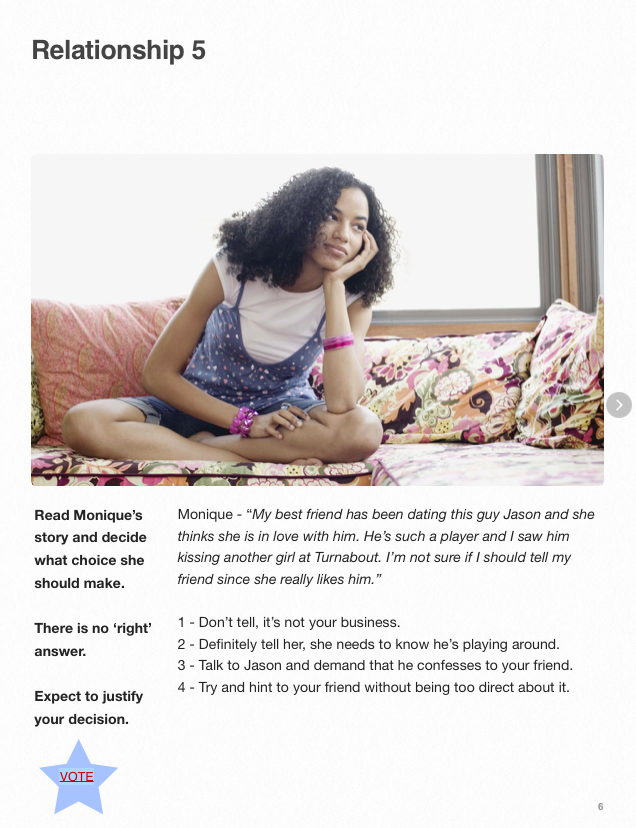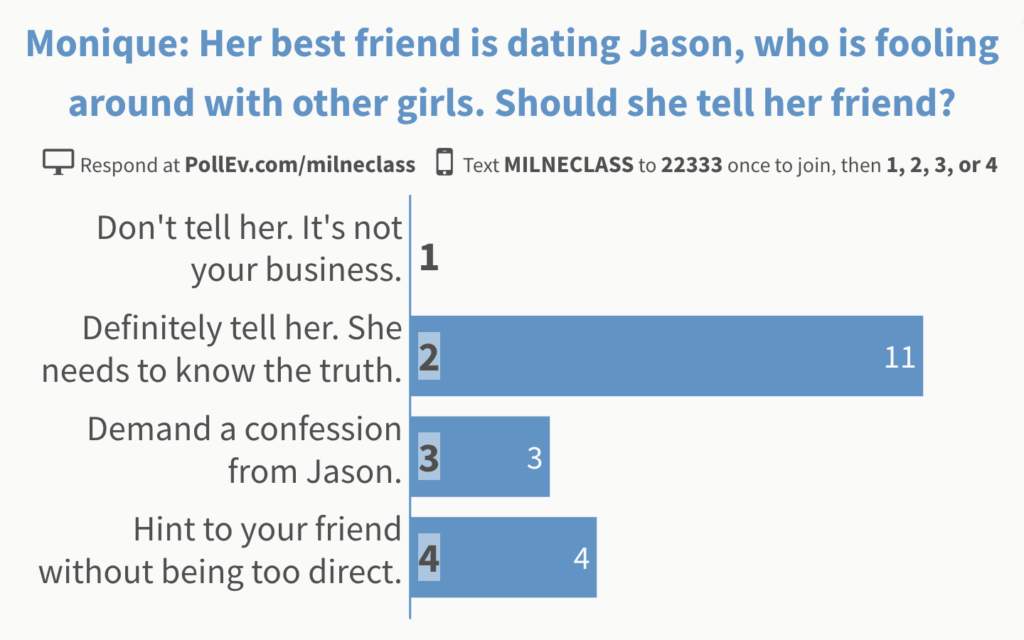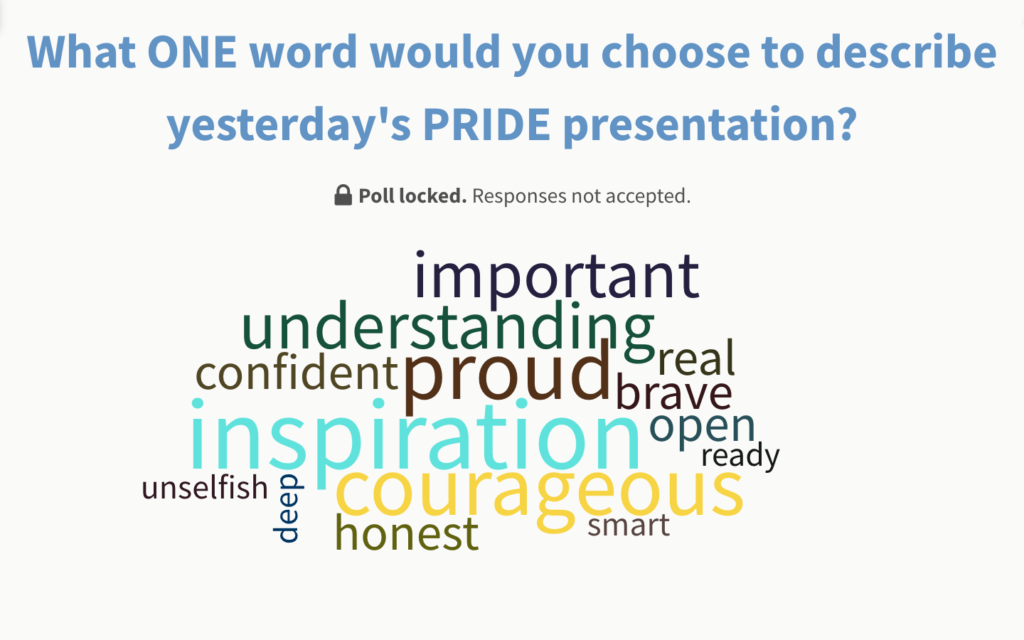How live polling helps students ease into complex topics

I cheated on my boyfriend because our relationship had become too predictable and I needed some excitement. He never found out, and I’m not sure if I should tell him.
How would you respond in this scenario?
That’s what Andrew Milne wants to learn from his students at New Trier High School in Winnetka, IL. Milne presents everyday scenarios about sexuality, friendship, dating, and abuse using an interactive classroom activity his students engage with on their tablets.
Milne doesn’t preach about these scenarios. He uses them as a springboard into classroom discussions on ethics and morality. These discussions start with a link that sends students to a live, multiple-choice poll powered by Poll Everywhere.
There, students decide for themselves how they would react. Their votes are anonymous, and appear as an animated graph that updates in real time. Popular opinion is captured instantaneously.
Here’s how you can recreate this interactive activity in your own classroom.
Above is one of Milne’s scenarios. Instructions clearly guide the student through the problem and possible responses. Finally, they arrive at Vote.
Tapping Vote sends them to a live, multiple-choice poll. This poll is powered by Poll Everywhere, a classroom response system that lets students respond using their phones or other web-enabled devices. Instructions on how to respond are listed in the poll, which updates in real time with each new response.
Poll Everywhere can be used in PowerPoint, Google Slides, or Keynote – as well as presented directly from the web. Milne has a multiple-choice poll for each of his scenarios, but he’ll sometimes follow those up with an open-ended poll that lets students submit any additional questions or comments.
“Every time my boss comes by my class, he loves to see Poll Everywhere, because it gives the quiet students a voice.” – Andrew Milne
Students love seeing their vote appear alongside their peers’ in a single, animated graph or chart that updates in real time. Milne has found this is especially helpful for quiet or otherwise reserved students. “They may think they’re dealing with an issue on their own,” he explained. “They think no one else will understand.”
But those same students who feel anxious about speaking up in class feel perfectly at home responding to a poll from the privacy of their phone.
Knowing this, Milne will periodically ask his students about the top stress factors in their lives using Poll Everywhere. This way, everyone gets a chance to speak up anonymously. “As they start to see the screen populating with more and more responses like their own, they develop some confidence.”
Milne saves and shares completed polls with other classes, to let struggling students know they’re not alone.
“One of the most powerful polls was when students, in front of other kids, came out as being gay,” said Milne. “They didn’t know what the straight kids were going to say.” The group of LGBTQ teens formed a panel to tell students at New Trier High School about their experiences. Afterward, Andrew created an interactive classroom activity to collect reactions from his students.
The impact on the young panelists was huge. “For them to have multiple peers say things like ‘Inspiring’ and see that word getting bigger and bigger on the screen; you saw how proud they felt seeing those responses from other students. It was really simple, but really powerful.”
Andrew captured a screenshot of the results, so that the teens on the panel could take it home.
Of course, running a live poll in a room full of high schoolers is going to be perilous. Combining total anonymity with the freedom of an open-ended poll is recipe for mischief.
The safest way to keep things on course is to use Poll Everywhere’s moderation controls. Moderation can be adjusted to automatically filter profane language, or let you personally review each response before it appears live.
Andrew also has his own extra layer of security: “I’m always about sharing screenshots of my students’ work on social media. So they don’t write silly responses, because they know it’s going to be shared. It keeps them on the straight and narrow.”
“[Poll Everywhere] is perfect for promoting discussion. It’s great to get live responses straight from the kids and say ‘Hey, who typed this? This is great! Let’s expand’. There’s a lot of depth in that.” – Andrew Milne



